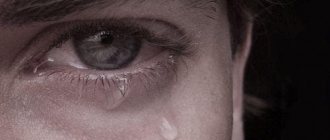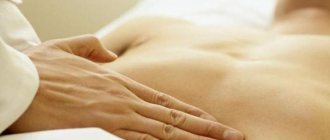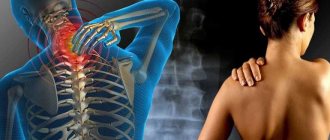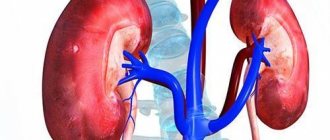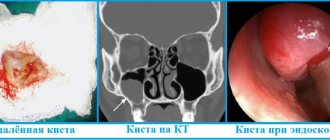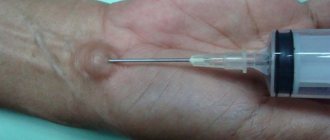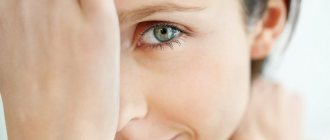Meteorological cheilitis is a lesion of the tissues and mucous membrane of the lips. Occurs due to the influence of negative environmental factors. The disease does not threaten the patient’s life at all, but can cause severe discomfort. Namely: poor health, psychological disorders, difficulties in eating. So you should not neglect the treatment of the disease. Moreover, cheilitis may be a sign of a more serious disorder. Prolonged manifestation of cheilitis is often the cause of the appearance of malignant tumors.
Cheilitis on the lips - how to treat
Once the diagnosis is correct, therapeutic procedures are carried out. All treatment methods can be divided into intensive and traditional.
Traditional treatment includes the use of ointments with an antibacterial composition and anti-inflammatory effect in the early stages.
Among the most effective are Tetracycline, Oxolinic and Erythromycin ointments. They completely block the action of pathogens.
After removing the main symptoms, lip balms and lipsticks with a medicinal composition are used. In addition to creams, the use of traditional methods that have an anti-inflammatory and soothing effect is recommended.
Intensive treatment methods involve the use of heavier, broad-spectrum drugs. These will be antihistamines, antifungal ointments, hormonal-based products, they are suitable for treating a wide range of skin diseases. In case of serious damage to the skin of the lips, physiological procedures will be prescribed.
In general, treatment for cheilitis consists of:
- Taking vitamin complexes and mineral supplements;
- The use of creams and ointments with regenerating and anti-inflammatory properties;
- The use of drugs against fungi, infections and other types of pathogens;
- Physiotherapeutic procedures;
- Phonophoresis.
Success in treating a disease is achieved only if the original cause of its occurrence has been eliminated. Otherwise, it becomes chronic and is fraught with frequent relapses. Sometimes treatment consists of strengthening the immune system, removing hypertrophied salivary glands, and taking sedatives.
Conclusion
In order not to start the disease, it is important to consult a doctor in time for help. Self-medication can only do harm. During the treatment process, it is important to follow all the doctor’s recommendations. If one of the symptoms appears, you should immediately visit a specialist. Traditional methods of treatment do not always have a positive effect on the patient’s recovery. Sometimes they can do a lot of harm and make the situation worse. It is not advisable to drink hot tea during treatment, as this will only further damage the mucous membrane. Many case histories of meteorological cheilitis indicate that self-medication can aggravate the situation.
Why does the disease occur?
There are many reasons for this disease. The formation of cheilitis is most likely if there is a tendency to allergic reactions and other skin problems.
The lips, their skin, mucous membranes or borders will be involved in the inflammatory process, which will lead to the appearance of a jam. Their appearance can be provoked by an exacerbation of psoriasis, tuberculosis, lichen ruber, or syphilis.
In general, experts identify a number of reasons that help the formation of cheilitis:
- Negative impact of external factors. This reason includes temperature changes when changing seasons. Cold wind and dry air lead to increased dry skin, which is the primary source of the disease.
- Use of low-quality cosmetics. A number of lipsticks contain lanolin, which leads to clogging of the pores on the lips. As a result, an inflammatory process develops.
- Unfavorable state of the ecological environment.
- Tendency to allergic reactions. Allergies can be caused by contact with household chemicals, low-quality cosmetic products, and food allergens.
- Diseases of the thyroid gland and malfunction of the immune system. Weakening of the body and its protective functions leads to an exacerbation of skin diseases in various manifestations.
- Problems in the functioning of the digestive organs, liver and other chronic diseases.
- In childhood, breathing problems. Physiological abnormalities.
- Lack of vitamins. This applies to B vitamins.
Disease prevention
Meteorological cheilitis appears due to aggressive environmental influences. These include:
- sunlight;
- ultraviolet radiation;
- hypothermia.
For the purpose of prevention, the influence of these meteorological factors on the body, in particular on the lips and the skin around them, should be minimized. To do this, it is recommended to use hygienic lipstick, which creates a protective layer on the surface of the lip tissue. In addition, you must follow a proper diet that contains a sufficient amount of B vitamins. Photos of meteorological cheilitis often cause anxiety in people, so they consult a doctor in a timely manner. If you have skin diseases such as seborrhea, dermatitis and others, you should periodically visit a dermatologist. Such diseases tend to progress and develop into complex forms. Self-medication is not recommended.
Symptomatic features of the disease
Cheilitis is a general name for a disease that is caused by various reasons. Symptoms will vary depending on the underlying source of the problem or where it is located. For example, if the inflammatory process is localized in the corners of the lips, then experts note angular cheilitis.
With cheilitis resulting from bacteria, viruses and other diseases, an infectious type of disease is formed.
If the inflammatory process began as a result of injury to the lips, it belongs to the mechanical category.
Despite a number of differences, lip inflammation has similar symptoms:
- Peeling of the skin. The surface of the lips or its border begins to peel off. The area of peeling depends on the location of the disease.
- In the early stages, dryness, slight burning, and soreness appear. The affected area swells and may turn red.
- At later stages, small cracks, wounds, and abrasions appear on the lips. As the disease progresses, they enlarge and may bleed.
Cheilitis is divided into wet and dry stages. In the first case, the lips are noticeable with swelling. The disease is accompanied by pain.
Crusts form on the surface of the lips. In the dry form, the skin of the lips peels off.
The process is accompanied by severe itching. When the scales are torn off, wounds are formed on the surface of the lips.
Classification of cheilitis
It is very important to correctly diagnose the type of this disorder, because cheilitis is the name of a whole group of diseases that differ in their causes and, accordingly, treatment. A therapist can accurately determine the type of cheilitis using the results of tests issued by him:
- Atopic cheilitis is an allergic reaction of the body. Caused by irritating factors that must be excluded. Be sure to visit an allergist.
- Exfoliative cheilitis - develops due to the appearance of shocks in the psychological and emotional sphere. A visit to a neurologist or psychiatrist is recommended.
- Glandular cheilitis is a congenital disorder.
- Hypovitaminous cheilitis is a deficiency of B vitamins.
- Catarrhal cheilitis is swelling, peeling and discoloration of the skin around the lips due to frequent microtrauma or damage from chemicals.
- Candidal cheilitis is an inflammation of certain lip tissues caused by a fungus.
- Meteorological cheilitis is a chronic inflammation of the lip tissue.
Depending on the type of disease, the doctor prescribes appropriate treatment. The duration of the course of treatment and dose are determined strictly by a specialist.
Necessary diagnostic measures
Diagnosis of the disease is made in a medical institution. Initially, the patient should consult a dentist. He examines the patient and asks in detail about the symptoms of the disease and situations in which it worsens.
Enough to make a diagnosis. In more serious situations, histological examination is required.
For complicated forms of cheilitis, you need to consult an allergist, dermatovenerologist, or oncologist. When diagnosing exfoliative cheilitis, there is a serious impact on the psycho-emotional state of the patient.
This requires additional consultation and a course of therapy with a neurologist or neuropsychiatrist. Along with the main symptomatic drugs, they prescribe a course of treatment with sedatives or tranquilizers.
Cheilitis on the lips can occur in both adulthood and childhood. It is not contagious and is caused by a malfunction of the body's systems.
With the viral nature of the disease, there are cases of infection of other people, but for this there must be close contact with the patient. The situations are rare.
Treatment of the disease
A set of measures to treat a patient for cheilitis includes limiting exposure to stimulating factors of external environmental influences, for example, solar radiation, up to lifestyle changes. To restore the body, protective creams with UV filters (to avoid exposure to radiation) and hygienic lipstick with restorative elements (pantothenic acid and vitamin E) are used.
In the treatment of meteorological cheilitis, ointments with hormones such as hydrocortisone or prednisolone, an oil solution of vitamins A and E are used for more intense regeneration. There are cases in which patients constantly tear off the scales, because of this the labial tissue bleeds and painful abrasions appear. Then light sedatives are used: tincture of valerian or motherwort. It is also necessary to take B vitamins during treatment.
It should be mentioned that during the period of bearing a baby, this disease should be treated as soon as possible for meteorological cheilitis on the lips. In this case, drugs must be selected with great care.
Allergic type of disease and its features
Allergic cheilitis is a type of disease in which the red border of the lips becomes inflamed.
The main cause of inflammation is contact with an allergen.
Experts call this type of disease contact; it manifests itself only after direct contact with an irritant.
The body's reaction does not occur immediately. It is delayed and may appear after 1-2 weeks or more. The maximum time for the reaction to appear is several years.
This type of cheilitis affects women over 20 years of age. It does not occur in children under one year of age.
Among the main causes of allergic cheilitis are cosmetic products. This could be lipstick, contour pencil, face cream. Food allergies can cause allergies: chocolate.
Citrus fruits, fruits with a high acid content. The disease often affects professional musicians who play wind instruments.
The main method of treating allergic cheilitis is to avoid contact with the provocateur. Then symptomatic treatment is applied. It consists of taking antihistamines, which allow you to quickly remove the allergen from the patient’s body.
The most famous are Tavegil, Suprastin, Loratadine. For severe or chronic forms of the disease, corticosteroid drugs are used: Dexamethasone, Prednisolone.
Ointments for the treatment of cheilitis on the lips are: Prednisolone, Hydrocortisone, Fluorocort, Solcoseryl paste. Sea buckthorn oil and vitamin A and E complexes are prescribed.
After all symptoms are removed, preventive procedures are carried out. They consist of refusing to use the allergen, following a diet, and carefully caring for the skin of the lips.
Symptoms and diagnosis
General symptoms characteristic of all types of cheilitis:
- burning, peeling, dry skin of the lips;
- the appearance of cracks, ulcers, small painful blisters;
- formation of dry scales;
- the appearance of purulent discharge;
- swelling, soreness of the lips.
Photo of cheilitis on the lips:
In details:
- Actinic. It comes in simple and exudative forms. Scales, cracks, and swelling appear on the lower lip. Erosions and crusts may occur.
- Glandular. The patient begins to be bothered by dryness and flaking, most often on the lower lip. Then crusts and erosions appear. All this is accompanied by pain.
- Exfoliative. Dry lips, soreness appear, and dry gray scales form. Usually both lips are affected. The scales appear in the center, the edges of the lips are free. In severe cases, a person is worried about swelling, pain, and the presence of a large number of yellow crusts. It becomes difficult to eat and speak. This form is difficult to treat.
- Allergic cheilitis. The patient is concerned about swelling, redness of the lips, itching and flaking. Blisters may appear, which may leave cracks and erosions on the lips.
- Atopic. Stands out as a symptom of neurodermatitis and atopic dermatitis. Itching and peeling of the red border of the lips occurs. Cracks form, especially in the corners of the mouth.
- Eczematous cheilitis. Lips turn red, swell, and itch. Bubbles, crusts and weeping appear. Inflammation can also affect the surrounding skin.
- Meteorological. Most often, only the lower lip is affected. It becomes dry, swelling, cracks and scales appear.
- Candida. The lips become dry, cracks form on them, and infection occurs. Thin white scales appear. The patient is bothered by itching, pain, and finds it difficult to eat hot and spicy foods.
- Precancrosis abrasive cheilitis Manganotti. Bright red erosions appear on the red border of the lower lip.
- Melkerson-Rosenthal syndrome. Patients may complain of facial distortion, swelling of the lips (may affect the eyelids and cheeks), and severe itching.
- Cheilitis due to hypovitaminosis. The patient is concerned about peeling, itching, redness of the lips, as well as the appearance of cracks. Inflammation of the tongue may develop.
- Angular cheilitis (seizures). First, redness appears in the corners of the mouth. It can then spread to the skin and buccal mucosa. Erosion often forms with crusts that crack when talking or eating. Bleeding from wounds is possible.
Which doctor treats cheilitis on the lips? Cheilitis is usually treated by a dentist. Only he can determine the form of the disease and prescribe further treatment. Do not buy medications or use folk remedies without the advice of a specialist.
Nuances of eliminating atopic types
The atopic form of cheilitis appears as a result of an inflammatory process in the tissues of the lips. Inflammation is a response to an allergen. The disease is symptomatic and often becomes chronic.
Sometimes experts consider it a type of atopic dermatitis, but with manifestation only on the lips. One of the reasons for the occurrence of this disease is called genetic predisposition.
The disease most often affects children aged 5 years. It may go away with the end of puberty. Recently, atopic cheilitis often occurs in people over 40 years of age.
This form of the disease is characterized by inflammation of the red border, the appearance of cracks in the corners, itching and soreness. The lip tissue may become swollen. Among the accompanying symptoms are peeling in the elbows, popliteal folds, and dry skin.
The disease goes into remission in spring and summer. With the onset of cold weather it worsens.
The main method of treating atopic cheilitis is diet. It is aimed at eliminating allergenic products. It is important to completely avoid sugar, chocolate, honey, fried, smoked, salty and spicy foods.
Semi-finished products and products with a high content of dyes, flavors and taste enhancers are not allowed in the diet. Avoid citrus fruits and foods high in acids.
Symptomatic treatment includes the use of creams and ointments that relieve itching, burning, and accelerate the regeneration of lip skin cells. New generation antihistamines showed the greatest effect. This could be Zodak, Zyrtec, Fenistil.
Antibiotic complexes, in case of bacterial infection. Corticosteroid creams are used to heal sores on the lips. For general strengthening of the body, vitamin complexes and immunomodulators are prescribed.
Contact allergic cheilitis
This variant of the disease appears as an allergy when interacting with various substances. The pathological process is based on a delayed allergic reaction to chemicals.
Common causes of contact allergic cheilitis are:
- Toothpastes,
- Lipsticks,
- Components in the plastic composition of prostheses,
- The habit of holding pens and pencils in the mouth,
- Smoking using a metal mouthpiece.
The clinical picture is characterized by the localization of the pathological process on the red border of the lips. In some cases, the disease affects small areas of the skin. Sometimes there is a combination of damage to the lips and oral mucosa.
At the site of the lesion, erythema and small blisters form, which quickly transform into erosions or cracks.
Patients complain of burning, itching and swelling of the red border.
Differential diagnosis is carried out with:
- Dry form of actinic cheilitis;
- Exfoliative cheilitis;
- Atopic cheilitis.
Treatment is based on eliminating the factor causing the allergic reaction.
For topical use, ointments with corticosteroids are prescribed, which must be applied to the affected areas at least five times a day.
Eczematous and candidal form
Candidal cheilitis is a disease that occurs as a result of infection by the candida fungus on the skin and mucous surface of the lips. Among the factors that provoke this pathology are chronic diseases, disorders of the microflora of the skin surface, allergic reactions, and oncology.
The main treatment method is proper toileting. It is necessary to regularly clean the lesions.
Rinsing with soda or a weak solution of potassium permanganate is often prescribed. The mucous membranes and main areas of inflammation are wiped with a cotton swab with fucarcin or brilliant green.
Local preparations include Nystatin ointment and Clotrimazole ointment. If these drugs do not produce positive dynamics during long-term treatment, then the drugs Fluconazole, Ketonazole, Intraconazole are prescribed.
In addition to these medications, it is recommended to take vitamins and restorative medications.
Separately, it is worth mentioning eczematous cheilitis. It manifests itself as an eczematous process on the surface of the lips. The disease can be in acute, subacute and chronic form.
During an exacerbation, weeping eczema or crusts form on the surface of the skin. The appearance of scales is noted. The whole process is accompanied by pain.
To treat the eczematous form of the disease, antihistamines are prescribed: Suprastin, Diazolin, Tavegil, Zodak. It is recommended to take products containing calcium and sodium.
In some situations they are administered intravenously in the form of droppers. In case of exacerbation, corticosteroid ointments are prescribed. For all forms of cheilitis, vitamin therapy is indicated with an emphasis on vitamins A, B, and folic acid.
Symptoms of the disease
At the initial stages of the development of the disease, pronounced symptoms are always present. Characteristic features of meteorological cheilitis are:
- Burning lips.
- Peeling of the skin.
- Feeling dry.
- Erosion and abrasions (with prolonged absence of treatment).
Blisters and ulcers may appear on the surface of the lips and the formation of keratinized tissue and cracks underneath them. As medical practice shows, meteorological and actinic cheilitis is the easiest to treat.
It has been observed that patients with this diagnosis often lick their lips, which puts them at risk of secondary infection. Against this background, the possibility of developing malignancy of lip tissue increases.
Ointment that has shown effectiveness
Corticosteroid ointments have shown the greatest effectiveness in the treatment of cheilitis.
In dry forms of the disease they are used in the form of creams or ointments, in wet forms in the form of aerosols:
- Prednisolone ointment. Suitable for outdoor use. It has an anti-allergenic effect, relieves inflammation, swelling and helps reduce vascular permeability.
- Lorinden S. The drug has antifungal and antibacterial effects. N has shown high effectiveness in the treatment of dermatitis, eczema, dermatoses and other forms of skin diseases.
- Dexocort. The drug is available in the form of aerosols. Indicated for allergic skin diseases. The main contraindications to its use are bacterial, viral and fungal skin diseases.
- Hydrocortisone ointment. A product that is actively used for various forms of skin diseases: dermatitis, psoriasis, dermatosis and others. Has anti-allergenic and anti-inflammatory effects.
All medications should be used only after consultation with a doctor, according to the instructions for use.
Atopic cheilitis
This form of lip disease is a symptom of neurodermatitis or atopic dermatitis and occurs in children and adolescents.
The etiology is based on a genetic predisposition to atopic allergy. Allergens can include food products, medications, decorative cosmetics, microbes, household dust or pollen.
Symptoms. The area of the red border, adjacent areas of skin and corners of the lips are affected. The disease is manifested by infiltration and peeling with the formation of small scales. Over time, cracks and furrows appear on the lips.
Patients complain of peeling, burning and itching in the lips.
The disease is prone to long-term progression and exacerbations in autumn and winter. Accordingly, remission occurs in summer and spring.
A distinctive feature of atopic cheilitis is that it never spreads to the mucous membranes of the oral cavity.
Differential diagnosis is carried out with:
- Allergic cheilitis;
- Contact cheilitis;
- Actinic cheilitis;
- Streptococcal seizures.
Treatment. In the process of treating atopic cheilitis, it is necessary to carry out desensitizing therapy.
Antihistamines are taken in tablet form:
- Claritin,
- Diazolin,
- Fenkarol,
- Suprastin.
In case of prolonged course of the disease, corticosteroids are prescribed for oral administration for two or three weeks and ointments with corticosteroids for topical use.
In the absence of positive results from treatment, it is advisable to use Bucchi border rays.
To maximize the effect of therapeutic manipulations, allergen foods should be excluded from the diet:
- Strawberries,
- Chocolate,
- Caviar,
- Coffee,
- Citrus,
- Hot, spicy, salty foods,
- Alcohol.
Treatment with traditional medicine recipes
Traditional medicine in the treatment of cheilitis has shown high effectiveness in the early stages of the disease. It can cope with primary symptoms, but is not the main method of treatment.
In the chronic form or the presence of secondary symptoms, you need to use folk recipes as an aid to eliminate external signs of the disease:
- Lotions made from oak bark. A decoction of oak bark has a calming and anti-inflammatory effect. For preparation, use 1-2 tablespoons per glass of water. The mixture is boiled for half an hour, allowed to cool and filtered. Sterile swabs or cotton pads are soaked in the decoction. Compresses are applied to the lips for 15 minutes. Procedures can be performed up to 7 times a day.
- Lotions made from calendula or sage. Calendula and sage have also worked well in the treatment of cheilitis. They relieve inflammation, soothe the skin, soften and have an antiseptic effect. To prepare a decoction, use 2-3 tablespoons of herbs. They are poured with half a liter of hot water and boiled for at least 10 minutes. The broth is cooled and filtered. The product can be used warm. Lotions should be done as often as possible.
- Aloe juice with linseed oil. Aloe juice treats any disease. To prepare the ointment you will need the lower leaves. 1-2 large leaves are enough. They need to be washed and cleared of thorns. The pulp is then ground until homogenized in a blender. Flaxseed oil is added to the mixture in a ratio of 1 to 3. The mixture is stirred until a homogeneous mass is obtained. The composition must be applied to the lips 3 times a day.
- Flaxseed oil for cheilosis. For all types of diseases, it is recommended to use flaxseed oil. It is rubbed into the lips with massaging movements 2-3 times a day. Pay attention to injured areas. In addition to flaxseed oil, rose, fir, eucalyptus, tea tree and sage oils have shown high effectiveness.
- Honey or softened propolis. In the absence of an allergy to bee products, honey or softened propolis is used to treat cheilitis. They are applied to the lips several times a day and left as a mask for 15-20 minutes.
Doctor: Olga Shishkina ✓ Article checked by doctor
Share with friends or Save for yourself!
4.9 / 5 ( 8 votes)
Causes of meteorological cheilitis
The main factors provoking the disease include the following:
- Adverse weather conditions are the main reason.
- Work activity associated with prolonged exposure to fresh air (especially in strong winds, heat or cold).
- Disruption of internal organs (stomach, intestines, liver or gall bladder).
- An allergic reaction of the skin of the lips to exposure to cold or ultraviolet rays.
- Excessively dry and delicate skin.
Increased dryness of the lips can be caused by both a lack of vitamins (A, E, C, PP, group B - in particular), and the presence of diseases such as neurodermatitis, ichthyosis, etc.
Treatment of cheilitis
There are intensive and traditional methods of treating pathology. For mild stages of the disease, the main therapeutic agents are a variety of ointments with antibacterial and anti-inflammatory effects.
For complex treatment, Tetracycline and Oxolinic ointments are prescribed. These drugs prevent the influence of damaging factors on the surface of the lips. You can also use lipstick. In the case of the atopic form of the disease, experts advise taking hormonal medications.
Intensive therapeutic techniques are distinguished based on the type of pathology:
- The exfoliative type is treated depending on the severity of the pathology. Typically, tranquilizers, antipsychotics or antidepressants are prescribed. Radiation therapy is used as local treatment methods. This form of cheilitis can be treated with boron-vaseline ointment, as well as using rosehip oil and Retinol.
- If the pathology is caused due to strong exposure to UV rays, ointments with erythromycin, furatsilin, antifungal medications and preparations with vitamin B are used for therapy. Since this type of disease usually occurs in the cold season, doctors advise using small doses of corticosteroids at this time medications together with products that contain nicotinic acid.
- Treatment of the candidiasis form of the disease involves the use of vitamin therapy together with antifungal ointments to neutralize the Candida fungus.
- To treat the meteorological form of the pathology, B vitamins are prescribed. The local technique consists of using protective ointments for lining the lips, using sunscreen ointments and steroid preparations.
- Therapy for allergic cheilitis involves eliminating contact with the irritant. Further treatment consists of taking antiallergic medications, for example, Suprastin.
- In the treatment of atopic form, physiotherapeutic methods are used. For example, the use of electrophoresis is prescribed (12-18 procedures), the duration of one session is a quarter of an hour. In this case, the procedure is carried out once a day. In some cases, laser therapy may be used.
At home
If the pathology is not of a serious nature, then traditional medicine can be used to eliminate it. Below are some home remedy recipes that will help eliminate inflammation on the lips.
Calendula decoction recipe
Ingredients:
- dry calendula - 1 tbsp;
- water - 200 ml.
Preparation: Boil water. Pour the calendula into a jar, pour boiling water over it, and close the lid well. Let the broth brew.
Usage: Perform the procedure before going to bed. Soak a clean cloth in the warm broth and apply it to your lips for a quarter of an hour. Pat your lips dry with a towel.
Chamomile infusion recipe
Ingredients:
- dry chamomile - 1 tbsp;
- water - 100 ml.
Preparation: Boil water. Pour boiling water over the herb and let the broth brew.
Usage: Soak gauze in a warm broth, apply it to the sore lips, wait a quarter of an hour.
Result: Chamomile eliminates inflammation and itching, relieves redness, softens hard crusts.
Recipe with oak bark
Ingredients:
- crushed oak bark - 1 tbsp;
- water - 100 ml.
Preparation: Boil water. Pour boiling water over the bark, then place the mixture in a water bath for 30 minutes.
Usage: Soak gauze in warm broth. Apply it to your lips for ten minutes. Dry your lips with a towel and lubricate them with oil.
Other folk remedies:
- If large cracks appear in the corners of your lips, lubricate them with soft beeswax. Perform this procedure every 3 hours, and after a few days you will notice how the crack begins to heal. But remember, it is forbidden to open your mouth too much while eating or talking.
- Kalanchoe, like aloe, neutralizes minor inflammation and tightens cracks in the corners of the lips. For treatment, use a large cut leaf of the plant. Apply the cut to the inflamed area and secure with a bandage. After 2 hours, remove the patch; do not drink or eat while wearing it.
- Oil masks will help fill the lack of vitamin E and collagen. If your lips are dry, lubricate them with olive, linseed or any other vegetable oil. These foods contain large amounts of vitamin E.
Treatment
After receiving the results of the diagnostic examination, the specialist determines a treatment regimen for atopic cheilitis. This requires adjusting the diet and taking different groups of drugs.
Antihistamines
Effective antihistamines will help eliminate acute allergy symptoms and alleviate the course of the pathology.
The most commonly prescribed are:
- Claritin has a pronounced antiallergic effect due to the content of loratadine as an active substance. Quickly relieves itching, burning, swelling of tissues. Available in tablets and syrup for children.
- Diazolin is considered the most common medicine, prescribed to adults and children. Available in the form of dragees and tablets. The only drawback of the medicine is the side effect of drowsiness.
- Cetrin belongs to the new generation of antihistamines. Does not provoke addiction, drowsiness or other negative reactions. Prescribed for quick relief of itching and discomfort in the lip area. Available in tablet and syrup form.
Any of the drugs will help significantly alleviate the course of cheilitis. Use is permitted only after consultation with a specialist in the prescribed dosage.
Corticosteroids
Drugs from the group of glucocorticosteroids are prescribed for severe pathological processes with the inability to relieve symptoms with conventional antiallergic medications.
Various potent ointments are most often used:
- Advantan is a drug containing methylprednisolone that has anti-edematous, antipruritic, and antiallergic effects. Even with prolonged external use it does not provoke adverse reactions.
- Belogent is a hormonal ointment containing betamethasone and gentamicin. It has antibacterial, anti-inflammatory and antiallergic properties, quickly eliminates the symptoms of pathology when used topically several times a day.
- Hydrocortisone is considered the most accessible and popular drug from the group of glucocorticoids. It is prescribed for treating the lip borders and has a pronounced effect.
- Prednisolone is an effective ointment containing the hormone of the same name. Helps cope with acute clinical manifestations of pathology in a few days and prevents the development of complications.
Ointments are usually prescribed from the first days of therapy to ensure a quick therapeutic effect. Independent use over a long period is not recommended.
Sedatives
It is impossible to treat cheilitis with one medicine; an integrated approach is required. If the patient experiences constant nervous tension or stress, sedatives are prescribed.
Most often, herbal medicines are used, which have a slight calming effect and do not affect performance and concentration. The most popular will be the following: Persen, Novo-Passit, Relaxil, Sedavit.
The daily dose is 2 tablets, the duration of administration is determined by a specialist, usually 2 weeks are enough to normalize the condition. Medicines contain plant extracts, for example, valerian, hawthorn, chamomile, St. John's wort, mint. They have a mild sedative effect.
Vitamins
Vitamin complexes help strengthen the immune system and replenish the deficiency of essential substances. To treat cheilitis, the remedy must include B vitamins.
The most balanced complexes will be:
- Vitrum is a vitamin complex containing all the necessary substances. Available in several versions for children and adults.
- Complivit has a balanced composition. There are several varieties for children, women and men.
- Alphabet is one of the most popular products containing minerals and vitamins. Strengthens the immune system, replenishes the deficiency of important components. The complex is produced for adults and children of all ages.
Any of the drugs must be taken for at least 4 weeks in a row. Sometimes doctors extend the course to 2 months.
Diet
To speed up recovery, you need to adjust your diet. The first step is to eliminate foods that can trigger an allergic reaction. These include oranges, chocolate, strawberries, canned food, red fish, coffee, exotic fruits and seafood.
Food should be fresh and warm. It is recommended to avoid salty, fried, sour, bitter, spices, and carbonated drinks. To compensate for the lack of vitamins, it is necessary to include fresh vegetables, fruits, dairy products, and cereals in your daily diet.
Alcohol and cigarettes are completely excluded. It is better to drink juices or tea with a straw to avoid irritation of the affected areas.
Physiotherapy and folk remedies
Physiotherapeutic procedures are often used in the treatment of cheilitis, with the help of which you can quickly get rid of unpleasant symptoms and speed up the desired recovery. For example, it could be:
- laser therapy, which has an anti-inflammatory, anti-edematous effect;
- electrophoresis with the use of corticosteroids, antihistamines;
- phonophoresis using hormonal ointments;
- UHF treatment, which has anti-inflammatory, stimulating and regenerating effects;
- Microwave treatment that improves blood circulation in the affected area, stopping the inflammatory process and swelling.
In combination with the main therapy, treatment with folk remedies can be carried out. Aloe, or rather its juice, has an antiseptic and nourishing effect. It can be used as a paste, after crushing it and applying it to the area with the jam. The compress is kept for half an hour, performing the procedure 5 times a day.
No less effective in the fight against cheilitis is sage, from which a tincture is prepared: dried herb in a volume of 3 tbsp. l. pour boiling water (0.5 l) and leave to infuse for 2 hours. Strain the finished product, soak a small piece of gauze in it and apply to the affected area for 30 minutes three times a day.
Oak bark is known to many for its strengthening effect. In addition, it is actively used in the treatment of cheilitis: 2 tbsp. l. the bark is poured with 200 ml of water, put on fire and boiled for 30 minutes. After removing from the heat, the broth must be left to steep for another half hour, after which a piece of gauze should be soaked in it and applied to the jam for 15 minutes. Carry out the procedure up to 10 times a day.
Even though the disease cheilitis itself is not dangerous, it still spoils the appearance and brings aesthetic discomfort. It can be cured in a short time using both medications and folk remedies.
Source: med-post.ru
Treatment methods
The first recommendation is to eliminate exposure to unfavorable climatic conditions (perhaps change work to a more suitable one for health reasons).
Otherwise, the following therapy methods are applicable to restore and protect the skin of the lips:
- Use of moisturizing cosmetics (hygienic lipsticks, balms, creams, oils).
- Use of medications (in severe cases).
- Treatment with folk remedies.
- Taking multivitamin complexes and strengthening the immune system.
- Maintaining an appropriate diet.
Stages and degrees of cheilitis on the lips
Cheilitis is a disease that can develop in acute or chronic form, affecting the entire surface of the lips, or only part of the epithelial tissue.
In this regard, the following degrees of severity of the disease are distinguished:
- mild degree - the patient has slight redness of the lips, cracks appear in the corners of the mouth, but without the release of ichor, there are no signs of edema, inflammation is quickly relieved with antiseptic agents;
- medium degree - about 2/3 of the surface of the lips are covered with yellow or white scales, the inflammatory process gradually increases, swelling will occur, but in general the course of the disease is controlled, the pathology can be successfully treated with anti-inflammatory drugs and ointments from the corticosteroid group;
- severe degree - the epithelial tissues of the lips are covered with multiple cracks, from which ichorous fluid is released, suppuration is possible, the formation of yellow scales occurs, the disease spreads to the skin of the face and the mucous membrane of the oral cavity.
The stage and extent of the disease is determined by the attending physician based on the results of the examination of the patient. These circumstances are also taken into account in the process of selecting medications to relieve inflammation, swelling and eliminate bacterial infections if pathogens have penetrated into ulcers and cracks.
Diagnostics
Laboratory diagnostics are not carried out, but to confirm the allergic nature of the disease, a visual examination of the patient’s body is carried out: on the elbows, neck, popliteal cavities with atopic cheilitis, symptoms of damage (redness, rash, itching) will appear, since in these places the child’s skin is the thinnest and most sensitive . A blood test will show increased levels of eosinophils and B lymphocytes. If streptoderma of the skin occurs, then it is necessary to conduct a laboratory study of the microflora of the lesions to prescribe adequate antibacterial treatment. It is also necessary to exclude the possibility of parasitic infestation.
- How to treat wounds and ulcers if you bite your lip
- Causes of red spots or dots on the skin of the lips
- Furuncle on the lip (abscess): how and what to treat on the inside and outside
General recommendations
Therapy for this pathological condition involves the use of several techniques. Which treatment will be most effective for a particular person is determined by the doctor depending on the individual characteristics of the development of the pathology. Each form of the disease requires specific treatment, but there are some rules that must be followed during the period of therapy:
- daily oral hygiene (brushing teeth, rinsing the mouth with antiseptic solutions, etc.);
- treatment of dental pathologies, including decay and dental plaque;
- getting rid of the bad habit of licking your lips, smoking, touching your lips with your hands, etc.;
- Mechanical damage to the lips caused by a defect in the dentition, poor-quality filling of the front tooth or orthopedic design must be eliminated;
- visiting the dentist for correction or replacement of dentures.
In addition, therapy for seizures consists of the use of special local drugs, with the help of which you can quickly stop the inflammatory process and eliminate disturbing symptoms.
Complications
With atopic cheilitis, complications do not occur often, but the possibility of their development should not be excluded. Possible unpleasant consequences:
- transition of the process to a chronic form;
- difficulty speaking;
- deterioration of the patient's well-being;
- nervous disorders.
Therefore, seek medical help promptly and strictly follow your dentist’s recommendations. If the prescribed treatment regimen does not help you for a long time, it means that it was chosen incorrectly. And remember that chronic atopic cheilitis is much more difficult to treat; it is characterized by frequent relapses.
Causes
The main reason for the development of atopic cheilitis is an allergic reaction. It can develop from mold spores, dust, certain types of foods, pollen, and some medications. Contact dermatitis also occurs due to certain household chemicals, cosmetics, and pathogens.
Genetic predisposition is one of the reasons for the development of atopic cheilitis. If both of your parents are allergic, then the chances of encountering this diagnosis are high.
Additionally, we recommend that you conduct a comprehensive check of the whole body, since allergies do not arise out of the blue - this is how pathologies of the kidneys, liver, gastrointestinal tract, central nervous system, and endocrine system are triggered. Weak immunity, which suffers as a result of chronic diseases and other reasons, also plays a role. If possible, give up bad habits (smoking, alcohol) - they also aggravate the development of most diseases.
Also, atopic cheilitis can develop as a result of vitamin deficiency, poor nutrition, lack of minerals and vitamins. If you regularly experience stress and fatigue, you are also at risk. Therefore, the main preventive measure is to monitor your health and strengthen your immune system, eat right, give up bad habits, and get enough rest.
Causes of cheilitis on the lips
Cheilitis on the lips, the treatment of which should be carried out under the supervision of a dermatologist, dentist or surgeon, cannot develop independently without the influence of negative factors.
There are the following causes of cheilosis on the surface of the lips in men and women of all age categories:
- daily contact with aggressive chemical vapors that destroy the surface layer of epithelial tissue (acids, alkalis, other volatile substances);
- frostbite on the surface of the lips under the influence of cold air and gusty winds;
- mechanical damage to tissues as a result of impacts, falls and other mechanical injuries;
- results of a previous surgical operation on the face or directly on the surface of the lips;
- complications after poor-quality dental procedures for the treatment of upper or lower front teeth;
- consequences of diseases such as syphilis, atopic dermatitis, lichen planus, psoriasis, eczema;
- acute allergic reaction to cosmetics, food;
- prolonged fever, fever, chills;
- the result of a cold, flu, or acute respiratory viral infection.
Determining the causes of cheilitis on the lips is a prerequisite for developing an effective course of therapy. Without eliminating the harmful factors that affect the health of the surface of the lips, it is impossible to completely cure the disease with minimal risk of relapse.
Prevention
Treatment is always more difficult to carry out than to prevent relapses of the disease. People with a tendency to allergies should remember simple rules:
- Diet is the key to successful prevention: citrus fruits, chocolate, spicy and salty foods, and nuts are excluded from the diet.
- Reducing the consumption of carbohydrate foods helps reduce the frequency of relapses.
- Quitting alcohol and smoking, which seriously undermine the activity of the immune system.
- Regular physical activity, but without overwork.
- It is necessary to avoid regular stress at work and at home.
- It is necessary to identify the culprit allergens and avoid contact with them (pets, medications, plant pollen).
- Periodic courses of vitamin therapy. In spring and autumn, it is recommended to take multivitamin complexes.
Prevention methods reduce the risk of exacerbation of cheilitis, and therefore are mandatory for the patient to perform.
Treatment of exfoliative cheilitis: tips and reviews
Margarita, 16 years old: “My lips were very dry. It felt like they were tightening. I bit off the small crusts because it did not cause pain. At the appointment, the doctor said that it was cheilitis, the dry form. I was sent to a gynecologist and endocrinologist. Only after passing all the tests, I was prescribed treatment.”
Tatyana, 47 years old: “ I was prescribed triacuutan ointment and vitamins for the treatment of cheilitis. For some time the disease did not bother me, but then everything happened again: a red, inflamed border, dryness and tightness of the lips. The ointment only helps for two to three days. I went to the dentist and he advised me to give up lipstick for a while and treat myself with “Magic” zinc ointment.”
Arkady Nikolaevich, dentist : “if you come to see the doctor and find out that you have cheilitis, do not hope for self-healing. You will have to undergo tests, after which you will be prescribed treatment. To exclude Candidiasis, a swab from the throat and nose for flora and sensitivity is also necessary."
The danger of meteorological cheilitis
The main danger is that against the background of the disease, the risk of oncological pathologies of the lips increases (especially with non-healing and bleeding microcracks). Therefore, it is important to diagnose cheilitis in time and begin treatment.
Depending on weather conditions and the general condition of the body, the disease may alternate between phases of exacerbation and remission. The patient may perceive the remission phase as a complete recovery, but this is not the case. It is necessary to carefully monitor the skin of the lips, avoiding the next stage of exacerbation.
If you find white plaque on your tonsils, this may be a sign of various pathologies - from candidiasis to tonsillitis.
The order of teething in babies is described in this topic.
You can find out the reasons for the formation of a yellow coating on the tongue in this material.
Features of atopic cheilitis
A feature of the atopic variety of pathology is its development in response to the action of allergens or dermatological diseases. The patient almost never consults a specialist, since the main symptom of dryness can be tolerated.
If the violation is constantly ignored, complications and infection of cracks formed as a result of dryness are possible. The disease is typical for people at a young age; its course depends on the time of year.
Kinds
Taking into account the causes and nature of the course, cheilitis is divided into several groups:
- Catarrhal form is the most common. It is caused by frequent injuries and contact with chemicals. Visually, catarrhal cheilitis manifests itself as redness, peeling, and swelling of the lips.
- Hypovitaminosis - this form develops against the background of a lack or excess of B vitamins. It is characterized by dry tongue and burning of the oral mucosa. If you ignore the first symptoms and do nothing, over time small vertical cracks will form on the red border, which can bleed. The tongue usually swells, leaving marks from teeth.
- Exfoliative is the primary form of cheilitis. It can be exudative and dry. In the dry form, peeling of the skin is noted; if you carefully remove the crusts, but do not influence the cause in any way, over time the pathology develops again. With the exudative form, the lips hurt and swell.
- Atopic cheilitis on the lips is accompanied by peeling and pronounced redness of the border of the lips, the skin begins to itch and itch. The main cause of atopic cheilitis is allergies, but the problem may also lie in a genetic predisposition to the development of corresponding reactions.
- Grandular - the symptoms are pronounced, the lips dry out and peel, become covered with cracks, wounds, and become less elastic. A large number of red dots appear on the mucous membrane, and cysts can form in the glands. The disease develops due to acquired or congenital anomalies in the development of the labial glands, injuries, smoking, and the presence of untreated teeth.
- Meteorological - in this case we can talk about seizures that appear as a result of increased sensitivity to cold, wind, and UV radiation. The form is more common in men. Itching, burning, formation of erosions, small blisters that open to form crusts may occur.
Treatment of cheilitis should be combined - in this case you can count on its maximum results.
Types of disease
Before starting treatment for cheilitis, it is necessary to establish its type. In total, several types of disease can be distinguished:
- Exfoliative – appears due to weak immunity, vitamin deficiency, bad habits, and frequent stress. There are dry and exudative cheilitis. The second form is more dangerous and painful, characterized by swelling, redness, severe pain, and discomfort while eating.
- Angular - appears when infected with Candida fungus. The lips become covered with a gray coating, burning and itching appear. If left untreated, the disease becomes chronic, and it is almost impossible to get rid of it completely.
- Atopic - rare in adults; children are more susceptible to the disease. The main symptoms are pain, peeling, burning. If left untreated, it spreads to the skin of the face. The pathology worsens in autumn and winter.
- Cheilitis Manganotti can be a precancerous condition, most often found in men over 50 years of age. The main signs are ulcers and erosions on the lips, pain when eating. The cause most often is burns, metabolic disorders, and poor nutrition.
- Glandular - at risk for men over 50 years of age. With this type of disease, the lower lip is predominantly affected, painful cracks with suppuration appear on it, and there may be problems with salivation (either scanty or abundant).
- Meteorological - high air humidity, high and low temperatures, wind - all this can provoke the appearance of cheilitis. The lips become bright red, cracks and wounds appear, the patient feels constant tightness and dryness.
The situation is aggravated if a person constantly licks his lips.
- Actinic - the harmful effects of sunlight on the thin skin of the lips; children and people who work outdoors are at risk. The disease is seasonal, exacerbation occurs in spring and summer.
- Candidiasis - as in the case of angular cheilitis, the causative agent is the Candida fungus. People living in regions with high humidity are at risk.
The disease can also manifest itself when hygiene standards are not observed and after infectious diseases (with a weakened immune system).
- Macrocheilitis is a very dangerous form of the disease. The disease develops rapidly - within 10 minutes the lips swell, greatly increase in size, and paralysis of the facial nerve may occur.
The exact cause of the pathology is unknown, but hereditary predisposition plays a major role. It is extremely rare.
- Traumatic - appears after physical or mechanical injury and subsequently becomes infected. Characterized by the presence of painful crusts, stuck.
- Eczematous - simply put, it is allergic cheilitis.
- Lupus cheilitis is rare and can be one of the symptoms of such a dangerous disease as lupus erythematosus. The lips turn red, wounds and erosions appear on the surface, and atrophic processes along the border of the lips may begin.
Treatment of cheilitis and its duration will depend on the general state of health, the age of the patient, the type of pathology and its neglect. At the first symptoms, you need to consult a specialist, because in addition to the fact that an advanced disease is more difficult and longer to treat, symptoms can indicate the presence of other diseases.
If cheilitis is not treated on time, the disease can cause cancer.
